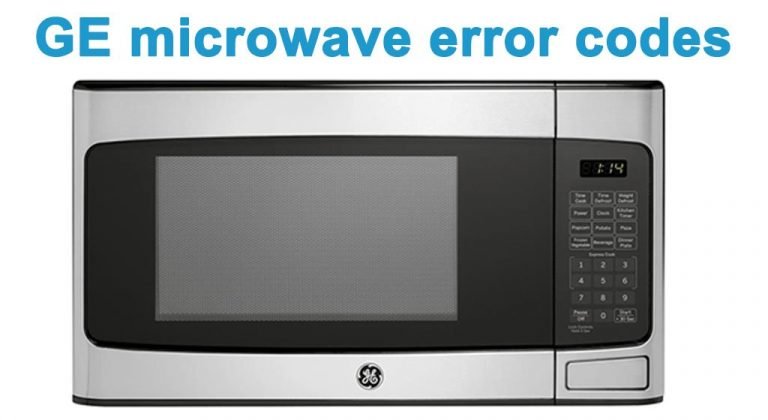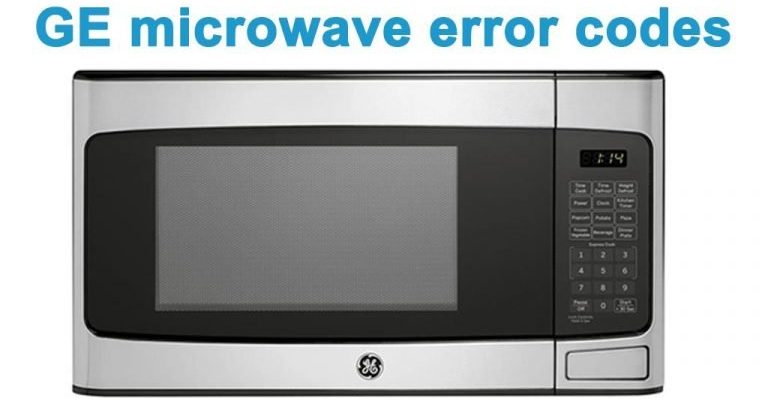
Imagine your microwave as a mini orchestra, where every part has a role to play. When all the parts work in harmony, your popcorn pops and your leftovers heat up perfectly. However, if one instrument in this orchestra hits a wrong note, the entire performance can fall flat. The UE error code is like that sour note—it indicates something isn’t quite right. This error is typically related to issues with the microwave’s rotating tray or its sensor system. Essentially, the microwave is trying to tell you, “Hey, something’s not right with how I’m spinning or sensing the food inside!”
Understanding the Rotating Tray Malfunction
The rotating tray in your microwave is crucial for even cooking, much like a turntable ensures a record plays smoothly. If it isn’t functioning properly, you might end up with cold spots in your food—not ideal when you’re in a hurry! The UE error in GE microwaves often points to problems with this component. So what could be going wrong?
First, consider the positioning of the tray. It might seem trivial, but if the tray isn’t seated correctly on its support ring, it can cause the whole system to falter. This misalignment can stop the tray from spinning and trigger the UE error code. Picture it like trying to spin a top on a bumpy surface—it just won’t work right. Double-check that the tray is sitting properly, with no obstructions, for a smooth spin.
Next, let’s talk about the support ring and rollers. Over time, these small parts can get dirty or damaged, impeding their movement. Like a bicycle chain rusted after sitting in the rain too long, these components need occasional care. Cleaning the rollers and ensuring they’re not worn out can prevent many spinning woes. If they are damaged, replacing them can be a simple fix to resolve the error.
Finally, the motor that drives the tray’s rotation can sometimes be the culprit. If it’s malfunctioning, it’s akin to having a car with a faulty engine—it just won’t go. If everything else seems in order but the error persists, it might be worth checking if the motor is receiving power and functioning properly. A professional can assist you in replacing a faulty motor.
Sensor System Glitches
Microwaves are smarter than you think! They rely on sensors to monitor cooking progress and adjust accordingly. When these sensors go awry, the microwave registers this as a UE error. Imagine it’s like a GPS losing signal—it can’t guide you properly if it can’t read your location. So, what causes these sensor issues?
One major factor is grime and residue build-up. Microwaves witness a lot of splattering and spillage. Over time, this can coat the sensors, leading to false readings. Just as you would clean your eyeglasses for a clearer view, regularly wiping the microwave’s interior can help maintain accurate sensor function. Use a damp cloth or mild cleaning solution to gently remove any stuck-on food or grease.
Additionally, electrical surges or interruptions can disrupt sensor performance. Think of it as a power hiccup that throws things out of sync. While you can’t always prevent power surges, installing a surge protector can shield the microwave from unexpected electrical jolts. This step can prolong the lifespan of the sensors and other electronic components.
Sometimes, the sensors themselves might be faulty. When cleaning doesn’t resolve the issue, it might be time for a replacement. Consulting with a repair technician can pinpoint which sensor is causing the problem, allowing for a targeted fix rather than a complete overhaul of the system.
Electrical and Software Issues
Every modern appliance runs on a combination of electrical parts and software—your GE microwave is no different. When something goes haywire in these systems, the UE error code can appear. It’s like when your computer freezes because of a random glitch—annoying, but usually fixable.
Loose electrical connections within the microwave can lead to intermittent operation and error codes. A wire that’s not securely connected might cause interruptions in power flow, much like a bad phone connection. If you’re comfortable, unplug the microwave and inspect the wiring for visible signs of wear or loose connections. Handling electrical components can be tricky, so if you’re unsure, contacting a professional is the safest bet.
On the software side, sometimes a simple reset can solve the problem. This is akin to rebooting a computer to clear out any temporary bugs. To reset your microwave, unplug it for a few minutes, then plug it back in. This can clear minor glitches and reset error codes. If the error persists, the problem might be deeper within the software, requiring professional diagnosis.
In some cases, an update to the microwave’s firmware might be needed. While not as common, manufacturers sometimes release updates to address known issues or improve performance. Checking the GE website or contacting customer support can provide guidance on whether an update is required and how to proceed.
Preventative Tips and Final Thoughts
Keeping your GE microwave in top shape doesn’t have to be a daunting task. A little maintenance goes a long way in preventing issues like the UE error code from popping up. Think of it like regular oil changes for your car—small efforts that keep everything running smoothly.
Regularly clean both the interior and exterior of your microwave to prevent grime build-up, especially on sensors. Check the rotating tray and its components periodically for any signs of wear or misalignment. This routine can help catch potential problems before they escalate into frustrating error codes.
If your microwave is still under warranty, don’t hesitate to use it. Manufacturers often provide repair or replacement services that can save you money and hassle. Keep any documentation handy to make the process smoother.
In summary, understanding the UE error code isn’t as daunting as it might seem. By paying attention to your microwave’s rotating tray, sensors, and electrical components, you can identify and address the root causes of this issue. With a little care and maintenance, your GE microwave can continue to serve up hot meals without a hitch.
